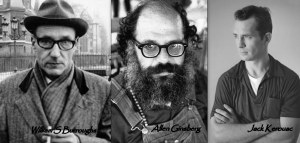To my knowledge, automatic writing was first formally introduced as a literary technique by André Breton, founder of surrealism.

[Source: the Paris surrealists, 1933: Tristan Tzara, Paul Éluard, André Breton, Hans Arp, Salvador Dalí, Yves Tanguy, Max Ernst, René Crevel and Man Ray. Photo by Anna Riwkin-Brick. Image found here: Art and Studio Tumblr, http://artistandstudio.tumblr.com/post/32230715584/the-paris-surrealists-1933-tristan-tzara-paul.%5D https://cameronstraughan.com/wp-content/uploads/2015/03/ff2cc-6a00d83542d51e69e2017d41973d8c970c-pi.jpg

The French psychologist Pierre Janet http://artsfuse.org/wp-content/uploads/2009/11/pierre_janet.jpg
In the first surrealist manifesto, André Breton set out some unique rules for the use of automatic writing; the first letter of the first word must start with an ‘L’, then it was up to the writer to unleash whatever came to mind. This allowed a surge of uncontaminated subconscious expression, uncensored and often illogical. By all accounts, Robert Desnos was an expert at this technique; he was also well known for entering a trance-like state in which he would create his art. I recommend Benjamin Péret as well.
I became fascinated by this technique when I started writing my own surrealist fiction back in 1989; I regarded it as a natural progression from writing down my dreams. Since then, I’ve learnt that other groups have done something similar – notably the Beatniks.
David Bowie used this technique in his song writing. Perhaps the best example of automatic writing outside of the surrealist group, and perhaps the first to use this technique, was Comte de Lautréamont’s ‘Les Chants de Maldoror’ – a work that greatly influenced the surrealists.

When I first started writing, with the humorous university newspaper series “The Surreal Adventures of Anthony Zen”, I had no real idea what surrealism even meant – let alone “Zen”. I just thought it had something to do with an odd, dream like feel and that’s what I was going for. Since then, I’ve come to have a deep respect and understanding of both surrealism and Zen Buddhism, and I regularly practice automatic writing. One of my first experiments with automatic writing was the surreal prose poem “Life, Love, Religion”, which I have performed at many poetry readings and always get a few laughs. I’ve included other examples here as well. While my early attempts where pen on paper, allowing a fast flow of uncensored thought, I now find I can do something similar using a keyboard. In fact, the process of automatic writing has given me the basis of many stories and humorous sequences. The only challenge I face as a writer is not writer’s block; I’ve never had it. My challenge is having too many ideas all at once. Even when it seems that the ideas have dried up, practicing a bit of automatic writing ensures a constant stream of ideas from the murky depths of the subconscious. I hope you enjoy these examples of automatic writing, and I hope you try some yourself – it’s good fun, if nothing more.




Great article! I suppose I can say that I sort of do that with drawing. Clear my mind and start the pencil moving. If nothing else, it starts a flow and opens me up to the drawing process.
LikeLike
Thanks! Some surrealists used to do automatic drawing. André Masson was the main proponent of this style. Check out his work.
LikeLiked by 1 person
Thanks. Will do.
LikeLiked by 1 person
Is your blog name inspired at all by the Siouxsie and The Banshees song? Happens to be a fav of mine.
LikeLiked by 1 person
I also know and love the song (had the album). A killing jar is a specimen jar with a bit of ethyl acetate inside. When the insect is put in the jar the acetate fumes kill it quickly. I use killing jars regularly for humane collection.
The name, Killing Jar Studio represents my insect art and loosely associates with my zombie/horror art.
Forgive the long-windedness.
LikeLike